Boy do I feel sorry for the folks who chose to go home - the hotel they took us to (I think it might have been called the "Maradiani") served us the best single meal I had on the whole trip. I don't plan to make this entry totally food-centric, but I have to say it. It was a buffet, like most of our lunches, but everything was delicious. The thing I liked was that they had a lot of Egyptian food in addition to more western dishes. Hummos, tahini, babaganous, fresh warm flatbread, chicken shawarma - now I'm hungry. Faouzi told us all to be sure to try the "om ali" which is Egypt's answer to bread pudding. Yeah, and I think Egypt wins that discussion! Om ali is what you do to use up the leftover PUFF PASTRY, and it's absolutely delicious. A recipe can be found here in case you are interested.
Then we piled back on the bus and hit the road. 45 minutes later we pulled up in front of the Step Pyramid of Djoser, which is the earliest major building built out of stone. (All those mastaba tombs built earlier were constructed out of mud brick.)
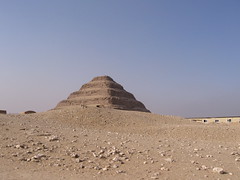
This was one of my favorite sites. There weren't that many vendors, it was less crowded, and they gave us a bit more free time. I wanted to walk all the way around the pyramid, but we didn't have quite enough time for that.
You go into the pyramid complex through the mortuary temple. I love the details that we learned about this complex. For example, we were told that the fluted appearance of the outside wall mimics mud-brick construction:
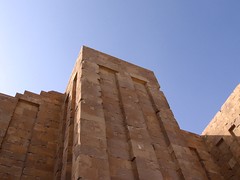
The ceiling of the entryway looks like logs or reed bundles
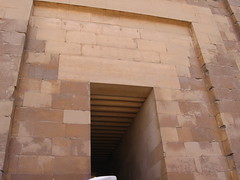
and there are fake stone doors, complete with fake stone hinges at the other end of the entryway!
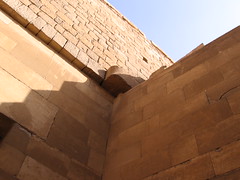
Just inside the entryway is a colonnaded hall, whose columns also look like reed bundles, which is what they would have held up the ceiling with in a mud-brick house.
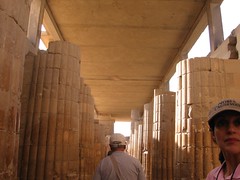
Interestingly, the architect, Imhotep, wasn't sure if free-standing stone columns would stay upright since this was the first time anyone had used them, so he "chickened out" - if you look at the sides of the columns away from the walkway, you'll see that Imhotep tied them into the walls.
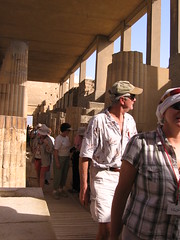
Inside the complex wall, there's a huge square of sand. We sat down on a little wall while Faouzi gave us the rundown on how the step pyramid evolved during Djoser's reign.
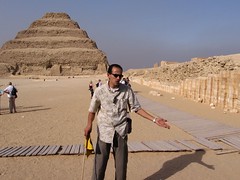
and then we had some free time to explore. We climbed up to a kind of overlook on top of an old wall:
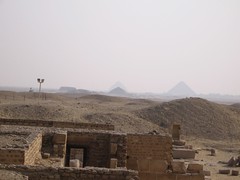
from which we could see all the way to Dashur where the Bent Pyramid (middle) and the Red Pyramid (right) are.
There are a lot of other tombs in the complex, too:
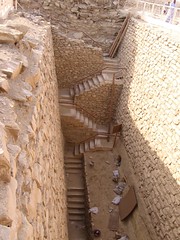
I just like the way all those steps look!
Because it's so sandy here, as we wandered closer to the Step Pyramid itself, we used these rickety little wooden walkways to keep us out of the sand. Look at the picture of Faouzi and you'll see them. One of the guys on the tour remarked that OSHA would take one look and shut this whole place down in about ten seconds!
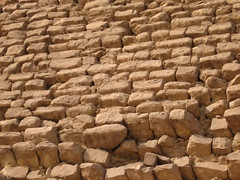
Close up, the Step Pyramid is kinda wild. Because stone building was new, they didn't use big blocks like we saw at Giza. They cut about a zillion little mud-brick-sized blocks instead.
I LOVED THIS PLACE!
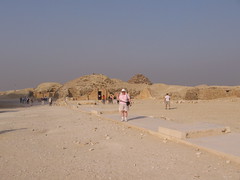

No comments:
Post a Comment